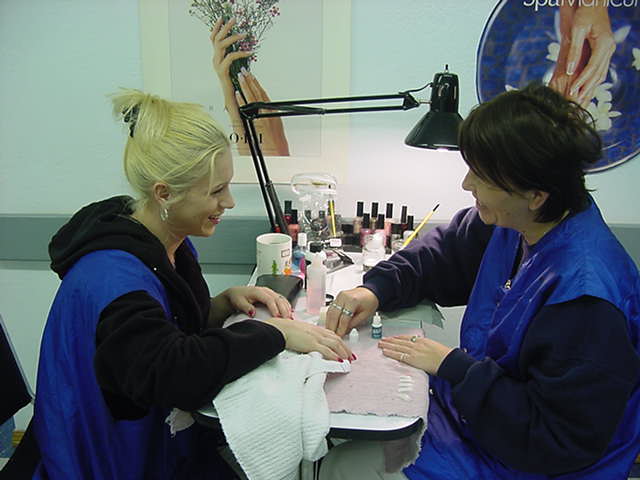
The first study, which appeared in the November/December 2017 Journal of Chemical Health & Safety, studied 90 hair and nail salon clients in three New Jersey counties, and found that the more these clients visited salons, the more they had to deal with dermal, fungal, and respiratory symptoms.
“While there have been studies on the safety and health risks to employees of these facilities, less is known about client perception of these risks or whether they are exposed in a similar manner. We found that although clients might be aware of some hazardous chemicals like formaldehyde, they often do not recognize the dangers posed by pathogens and environmental irritants,” lead author Lindsey J. Milich said.
Among the study participants, 52 percent said they suffered from dermal or fungal symptoms, which were most seen among people who visited salons at least three times within the past year.
Also, nail salon clients who came in less frequently had a higher rate of respiratory symptoms. “We attribute these cases to the fact that people who experienced respiratory symptoms were less likely to return,” Milich said.
The study mentioned the fact that improperly cleaned or re-used tools can expose clients to contact dermatitis and make them susceptible to bacteria, fungi, viruses, and blood-borne pathogens, including the hepatitis B and C viruses.
Other risks of salon visitations include allergic reactions to products with high concentrations of chemicals, such as formaldehyde; exposure to ultraviolet light; and respiratory irritation due to poor indoor air and environmental quality.
Aside from formaldehyde, the most common chemicals in hair dyes and nail polish include nitrosamines and toluene, which readily crosses the placental barrier and has been linked to less fetal growth and shorter pregnancy duration.
“Clients should ask their stylist or nail technician about the chemical ingredients in the products being used, how they disinfect their tools, and the type of ventilation system in the salon. People who use salon products at home should read labels and become familiar with safety precautions like wearing proper gloves or masks,” Milich said. (Related: 10 Toxic skincare product ingredients to watch out for.)
The second study, which was featured online in November 2017 Journal of Occupational and Environmental Medicine, reviewed on-the-job exposure to chemical exposures of salon technicians, plus the inadequacy of the training that are provided to some of them.
The researchers studied 68 technicians from 40 salons in higher-income (Livingston and Princeton) and lower-income (Newark and Trenton) regarding their understanding of health risks and hygiene. The researchers also performed observational surveys to measure the gravity of workplace hazards facing those employees.
The respondents were mostly Asian females with self-reported histories of work-related eye, nose, skin, and throat symptoms. Only a few of them reported using personal protective equipment, while most of them had received training not in their primary language.
“We found that these nail technicians were being trained but not necessarily in their native language, which raises concerns on how well the technicians understood the information being presented. The study, while small, gives an indication as to what might be occurring in other areas. It raises awareness for technicians to know their rights, meaning they should receive more comprehensive chemical use training and handouts in both English and in their native language and to speak up if they do not understand something,” said lead author Derek Shendell.
For more stories regarding how to properly care for your health as a woman, visit WomensHealth.news.
Sources include:
Please contact us for more information.






















